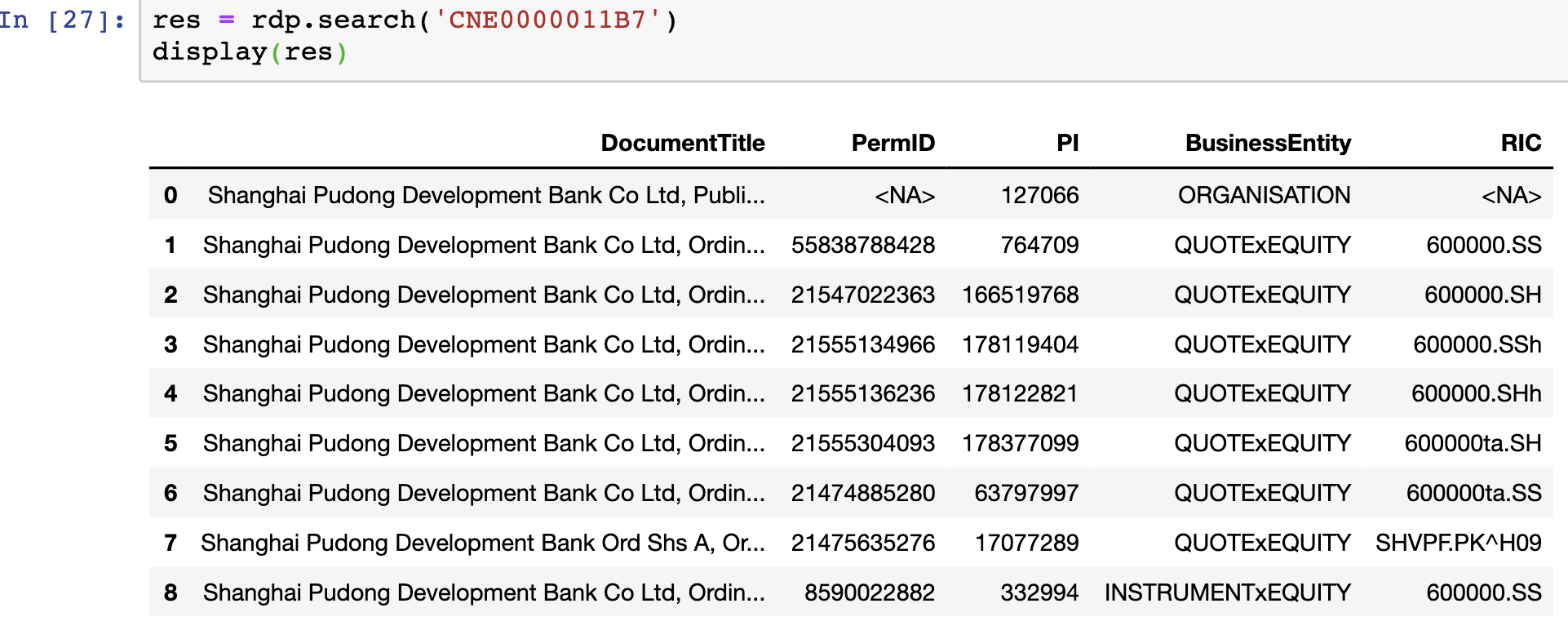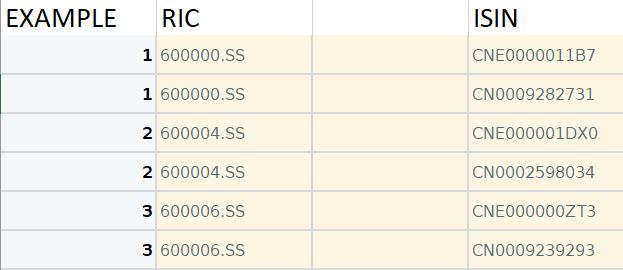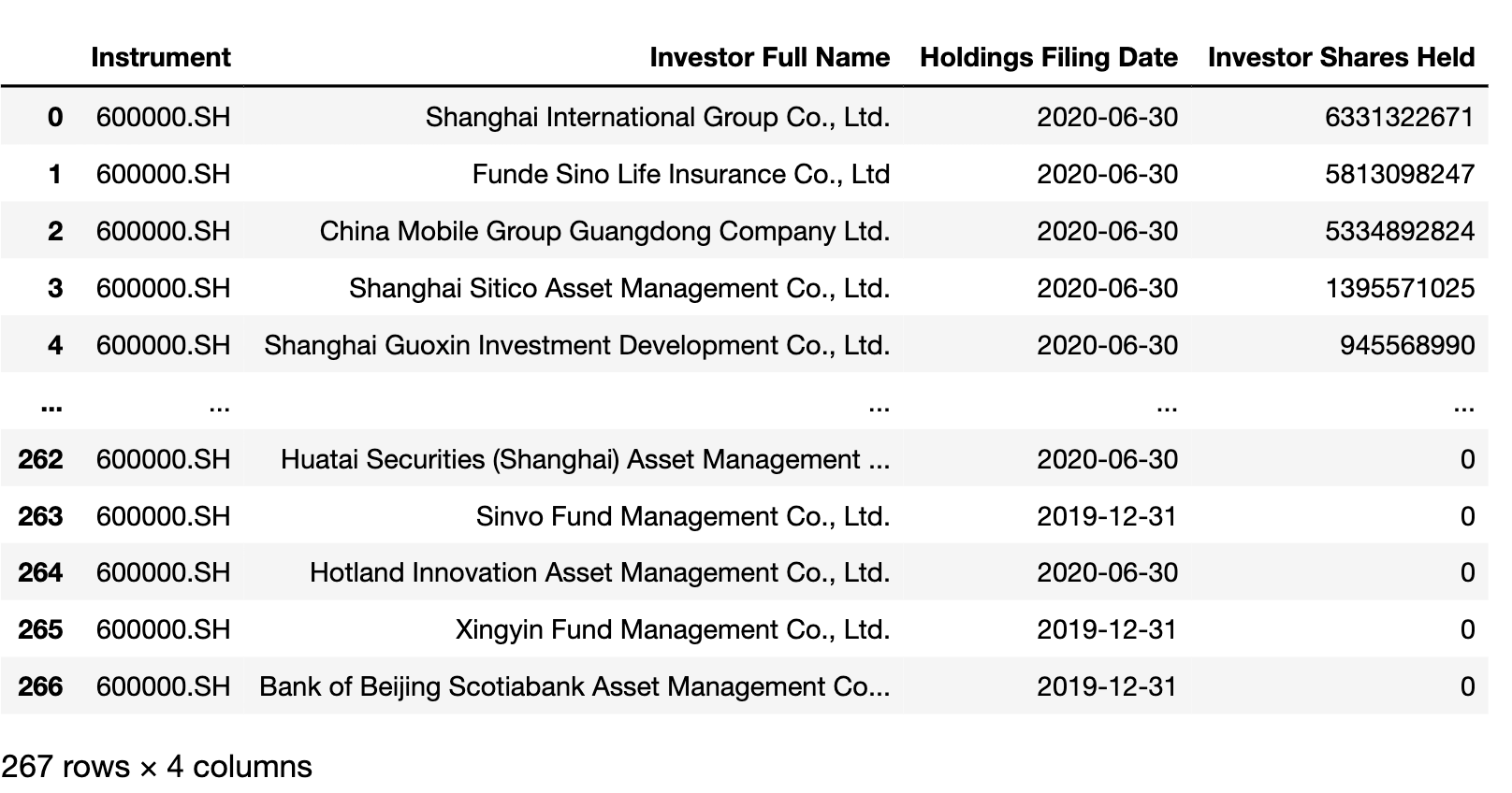Hello guys,
while using the API and requiring RIC & ISIN for Instruments traded on the chinese markets, I have received for some Instruments two or more ISIN numbers (TR.RIC,TR.ISIN).
As I have read on this site: (https://developers.refinitiv.com/en/article-catalog/article/isin-to-ric-conversion-with-dss-datascope-select-rest-api), it is stated that "Refinitiv products use RICs (Reuters Instrument Codes), which uniquely identify financial instruments, including where they are traded".
This in turn would mean that many RICs indeed could be connected one specific ISIN as it might be traded on several venues, but what would be the explanation the other way around?
I have also obtained (TR.Instrument.Type) and they are all the same, namely Ordinary Shares. As I have also obtained "TR.SharesHeld", is this number then independent of the ISIN obtained and thus only relates to the specific RIC?
Two examples:
600000.SS CNE0000011B7
600000.SS CN0009282731
600009.SS CNE000000V89
600009.SS CN000A0JEAT4
600009.SS CN0009145730
Thanks & kind regards,










